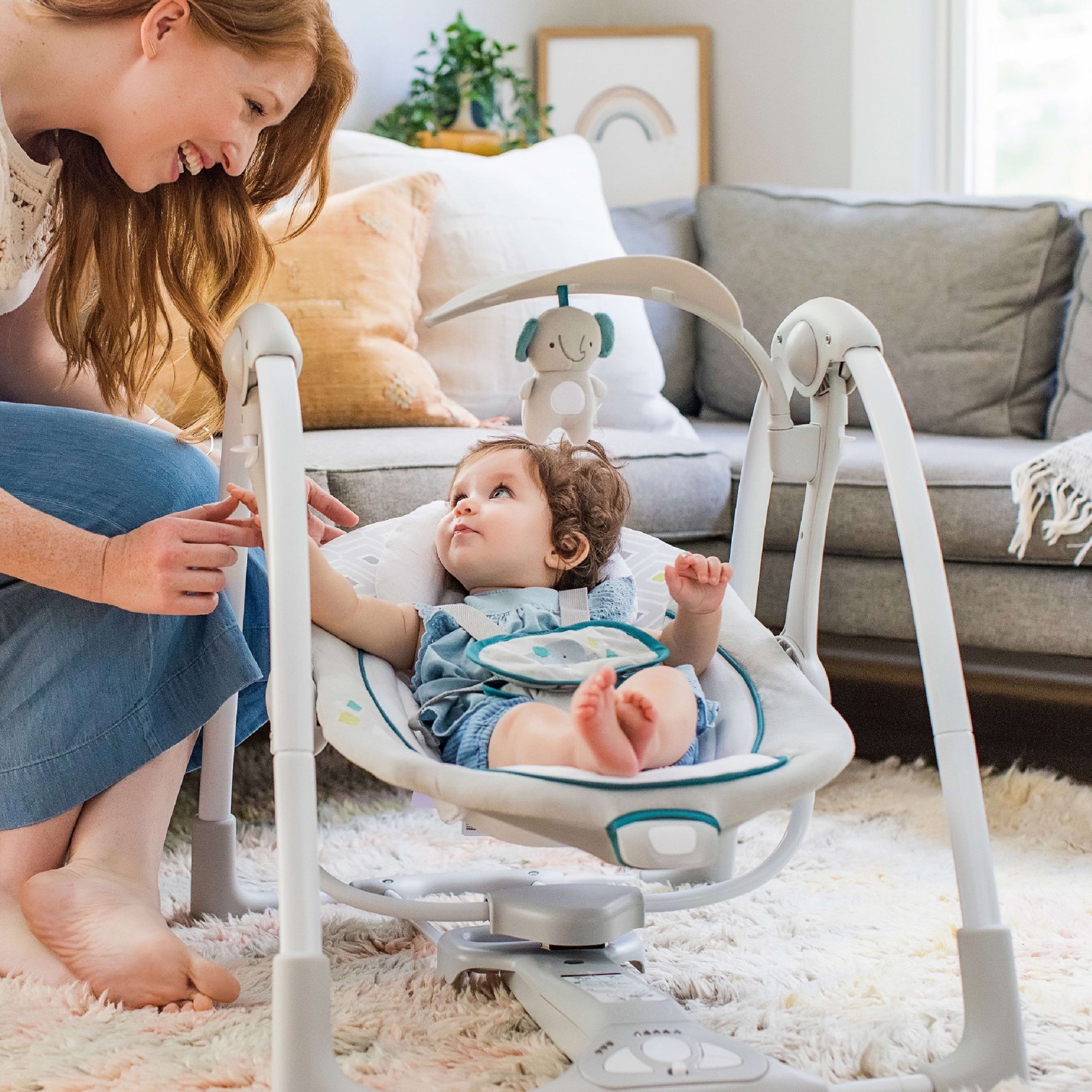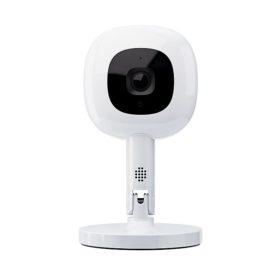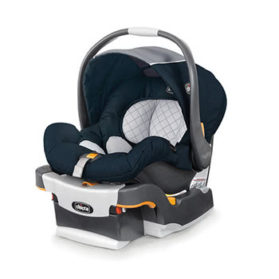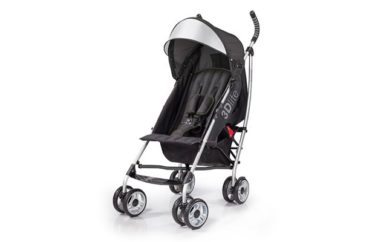Are you on the fence about whether or not you should buy a baby swing? Are you wondering if a baby swing is a good investment? Is it a necessary tool in helping you raise your little one?
If the answer is yes, you’re not alone.
If you’ve never been a parent before, navigating the sea of baby products can be overwhelming. Baby swings, in particular, can add to the stress because it doesn’t matter how many times you google “best baby swing”, your baby may end up being one that just doesn’t prefer a baby swing. The only way you can be 100 percent certain that your baby will like a particular swing is to test it out.
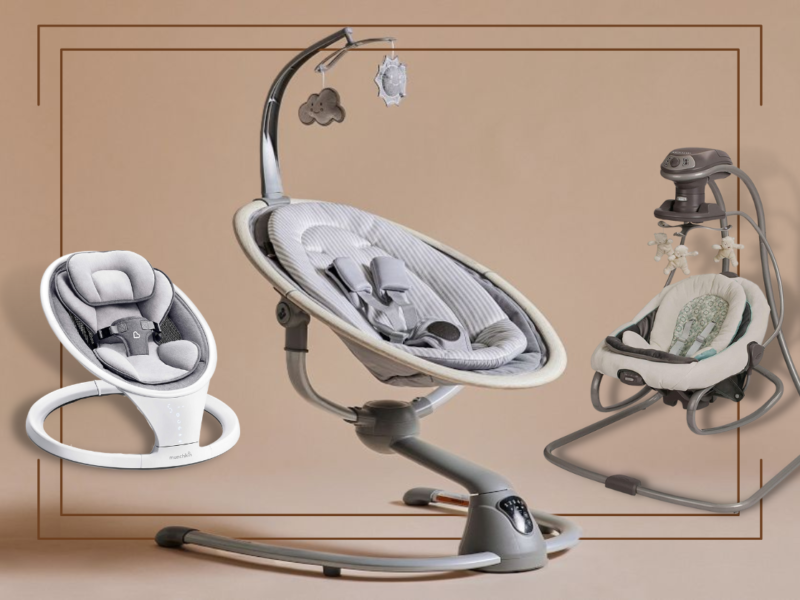
Recommended
9 Best Baby Swings of 2023
It’s a topic of consideration for many new parents, and the conclusions drawn by each parent are different, according to their own family’s unique situation.
Although baby swings and many other baby products aren’t necessary, many can help improve the quality of your day and this article is here to help you navigate answering these questions.
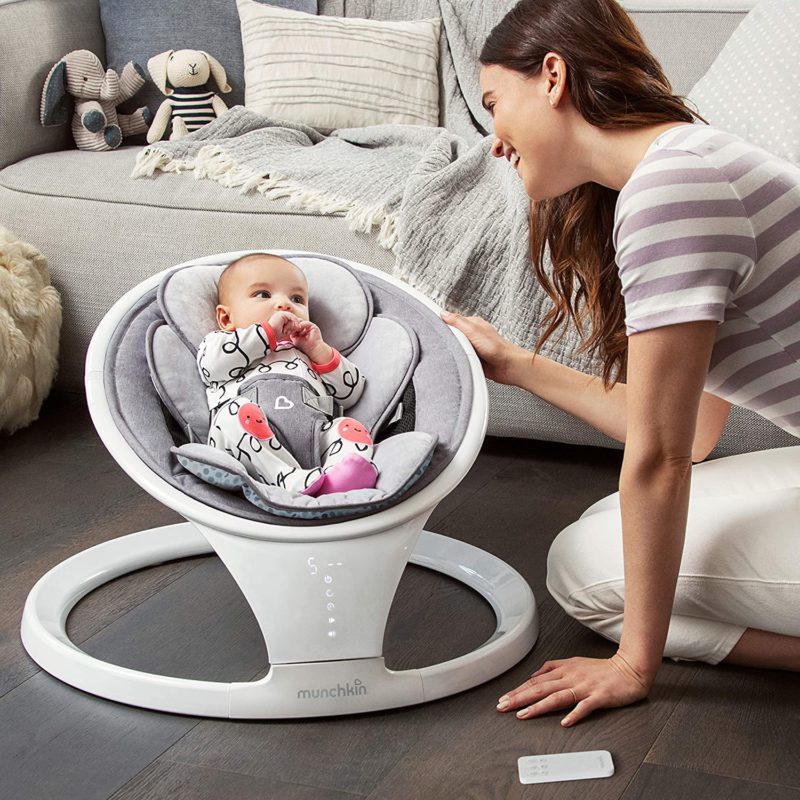
Also baby swings are only helpful for a few months before your baby reaches mobility milestones. Baby swings are typically made for babies weighing a minimum of five pounds and a maximum weight of 20 pounds. However, babies typically won’t last that long as they reach certain milestones and become more mobile, typically reaching these milestones around 5 to 7 months.
*A quick note: when we say “baby swing” we are talking about the type of gadget that is suspended on a frame and swings mechanically front to back, side to side or a combination of both. Perhaps that seems obvious but with bouncy seats, activity chairs, jumper seats, rockers and actual tree swings for babies, it can be confusing.
Alternative Options
- Bouncer – powered by baby’s own movements or by giving it a quick nudge with your hand or foot. Some bouncer features include music and a vibrator, both typically battery operated. Bouncers are often on the smaller side and are usually fairly affordable.
- Swing – powered mechanically, either by being plugged into an electric outlet or battery operated. Some swing side to side, others swing front to back and some do a combination of both. Many include features like vibration, sounds or a detachable mobile. They range from affordable to splurge-worthy.
- Rocker can be powered either mechanically or electronically. Rockers can come in the form of small cradles or look like more of a reclined baby seat.
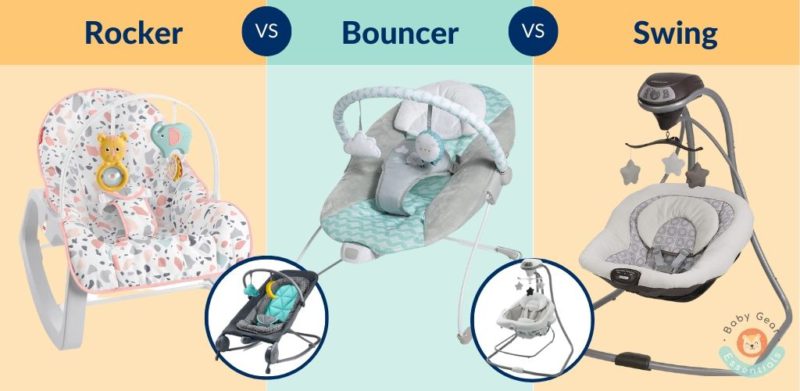
Now that we’ve got that out of the way, here are 5 things to help you decide whether or not you should buy a baby swing:
Should I Buy a Baby Swing?
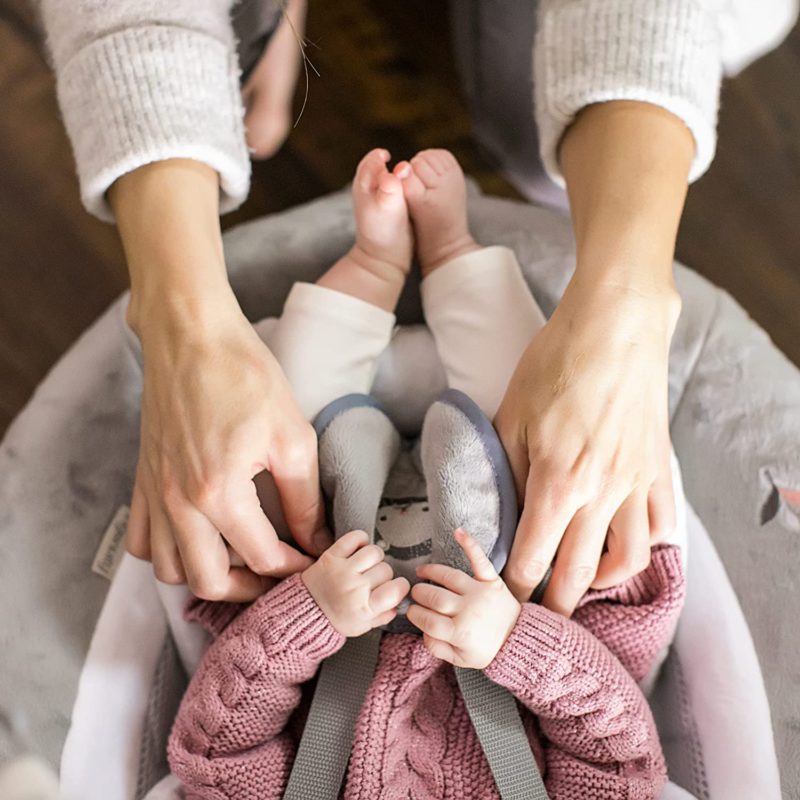
1. Will you have help caring for your baby?
Right off the bat, it’s good to consider how much help you’ll have. New babies like, and need, to be held; some of them like to be held A LOT. No matter how chiseled your biceps are, having a break from the baby after hours of cradling or soothing can be a relief. Will you have someone to help with that?
If the answer is no, you’ll definitely want to create a plan for where your baby will be when they’re not in your arms. A crib, a play yard, a baby gym are all great possibilities.
Just don’t forget that babies can get bored and sometimes need variety to help them stay peaceful or content. A baby swing can help.
Another consideration to make is how much “other stuff” you’ll need to be getting done each day. Will you be the primary caretaker of your baby as well as the household? If so, a swing can help buy you some time and allow you to knock out some chores and keep your baby happy and safe at the same time.
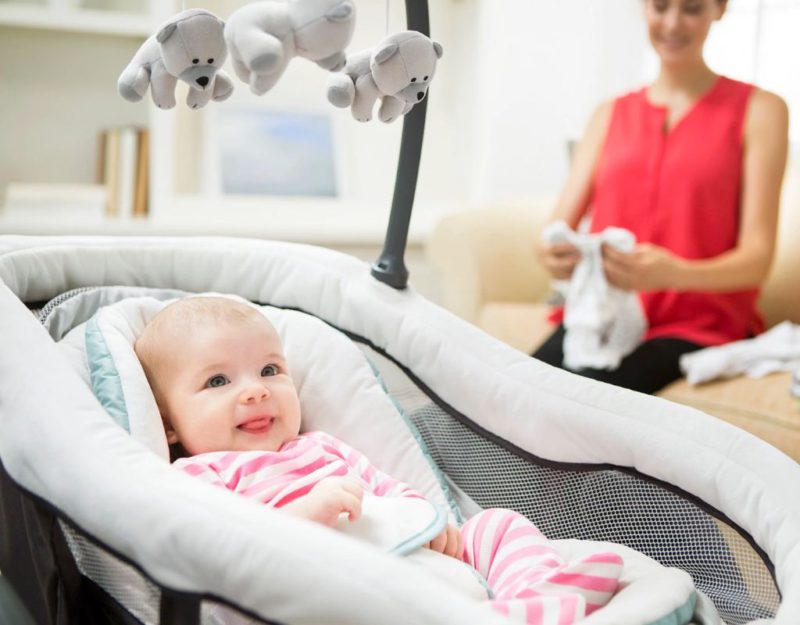
Another good alternative is a baby carrier: slings, wraps and buckle carriers essentially allow you to hold your little one handsfree, and might be the perfect option for you and your family. Here is our recommendations for the best baby carriers!
Just keep in mind that some find it difficult to maneuver safely when cooking or cleaning if they have a little baby strapped in front (and please be very careful regarding what kinds of chemicals and cleaning tools you use around your baby).
2. Is there enough space for a swing to fit comfortably in your home?
Space is another important thing to think about when deciding if you should buy a baby swing. Will you be able to find a place in your home that comfortably fits a swing?
Remember, you’ll want to keep the swing in a central location because swings aren’t meant for use without supervision. You also need to find a flat spot close to a power source to plug the swing in.
Plan on it taking roughly the same amount of room that a recliner would. Luckily some swings are on the smaller side and portable too, great if you happen to travel a lot!
Another option altogether for when you’re low on space is a bouncy seat. They’re often smaller and provide many of the same features as a swing, like music, toy bars, and harnesses to keep your baby safe. Though their movements are not automatic, some chairs come with a vibrate feature to help calm a fussy baby. If you can’t decide which would be better for you, you could also consider a swing that transitions into a bouncy chair, like this one.
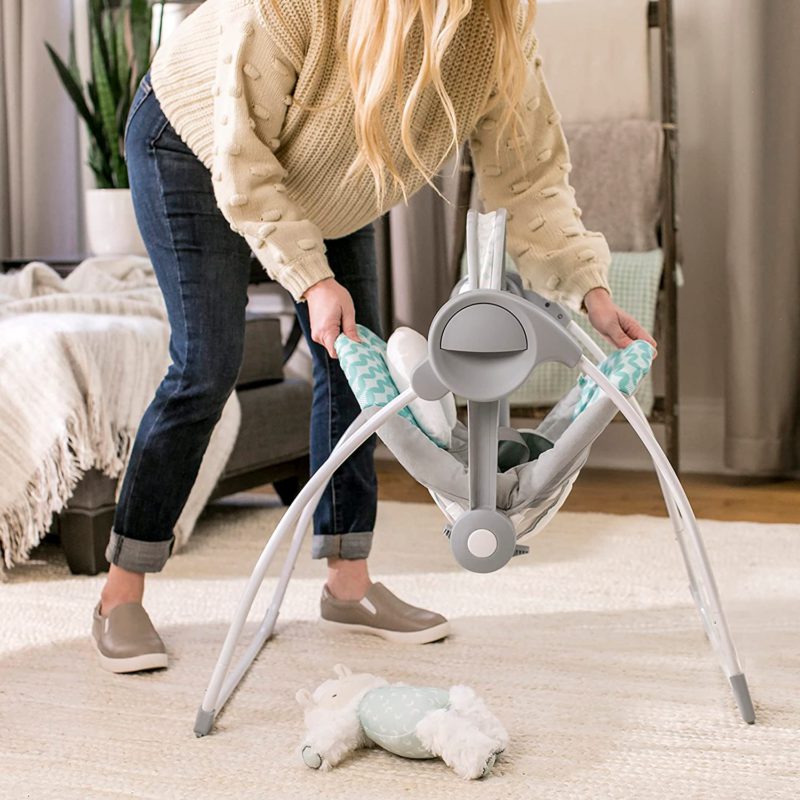
3. Is the price of a swing in your budget?
With all the different baby gear options and big purchases, it’s good to think about the amount of money you’d spend if you decide to buy a baby swing.
New baby swings typically cost anywhere from $50 to $300. More expensive models come with advanced features, while the less expensive models provide more basic options but still cover the important things like a 3-point harness, a fully reclining position (recommended by AAP for safe use with babies under 4 months), more than one movement speed, and often a toy bar or mobile for entertainment.
Is it important to you that your swing has more features?
- Do you want to go with a swing that provides many different types of motion in the hopes that you’ll be able to find at least one your baby likes?
- Or would you rather purchase a basic model and spend less in the event your baby won’t prefer swinging at all?
4. Are you looking for something to help your baby sleep?
Are you looking to buy a baby swing to help you with your little one’s sleep? Getting a tired baby to finally nod off can be tricky. Swings can be a great tool to assist you in calming your baby. But unfortnately they’re not recommended for sleep.
If your baby falls asleep in the swing you’ll have to pull an Indiana Jones and move them to their crib, or another safe sleep surface right away. You may wonder if it’s really that big of a deal but the reason they’re not intended for sleep is that infant deaths and injuries have occurred.
When babies are very small and their neck muscles are underdeveloped, airways can become obstructed if their heads fall forward during sleep. For the safety of your baby, it’s best to follow the manufacturer’s guidelines and not use a swing for sleep.
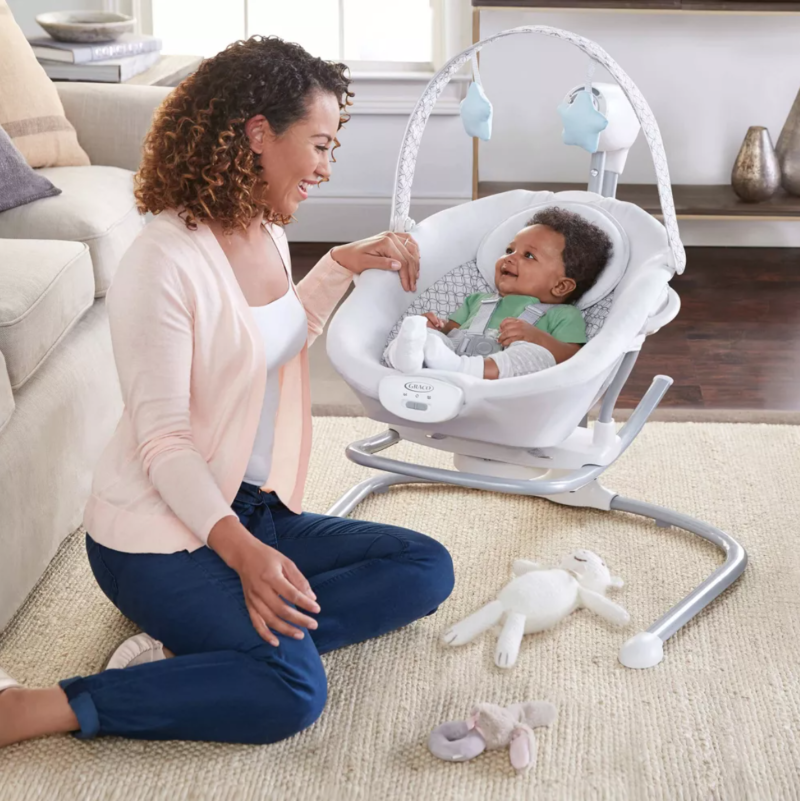
5. Does your baby have colic or difficulty calming down?
The last consideration in deciding if you should buy a baby swing, can only really be made after your baby is born but it’s a big one! Does your baby have colic or are they a little extra fussy and need additional support calming down?
If so, a swing could be a game changer!
Many parents of colicky babies have found that swings help calm their little ones down, and some swings provide entertainment as your baby gets a little older.
Conclusion: Should I Buy a baby swing?
Overall if you decide to buy a baby swing it could be a great addition to any new parent’s home!
The upsides include:
- Swings can add diversion, variety and entertainment to a little one’s day
- They can help soothe and calm tired or fussy babies
- They can provide parents and caretakers with small breaks from constant holding.
When used properly, baby swings are a safe tool to help you care for your child.
The downsides are few but include things like:
- Swings can be bulky and take up a lot of space
- Some babies will end up not liking them
- They could be a hassle if the baby constantly falls asleep and needs to be moved.
Hopefully, with this information in mind you can fast forward through many of your deliberations and make a choice about whether or not buying a baby swing is for you. Good luck!

Megan is a wife and mother of three, as well as an experienced foster mother. She loves building and testing new products, and helping identify what works best for readers and clients. She has her degree in Computer Software Engineering and has been a Product Lead with over 8 years of experience designing, building, testing, and selling products to companies ranging from sole proprietors to the largest retailers in America!

